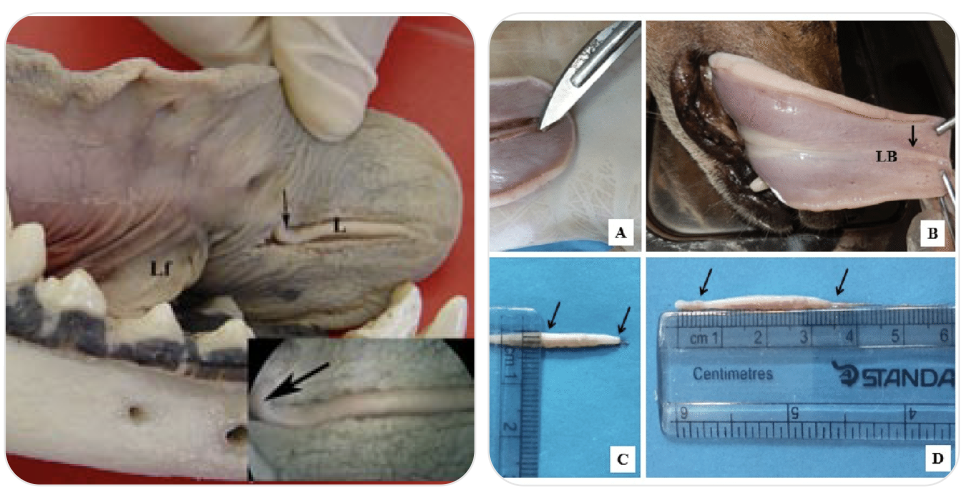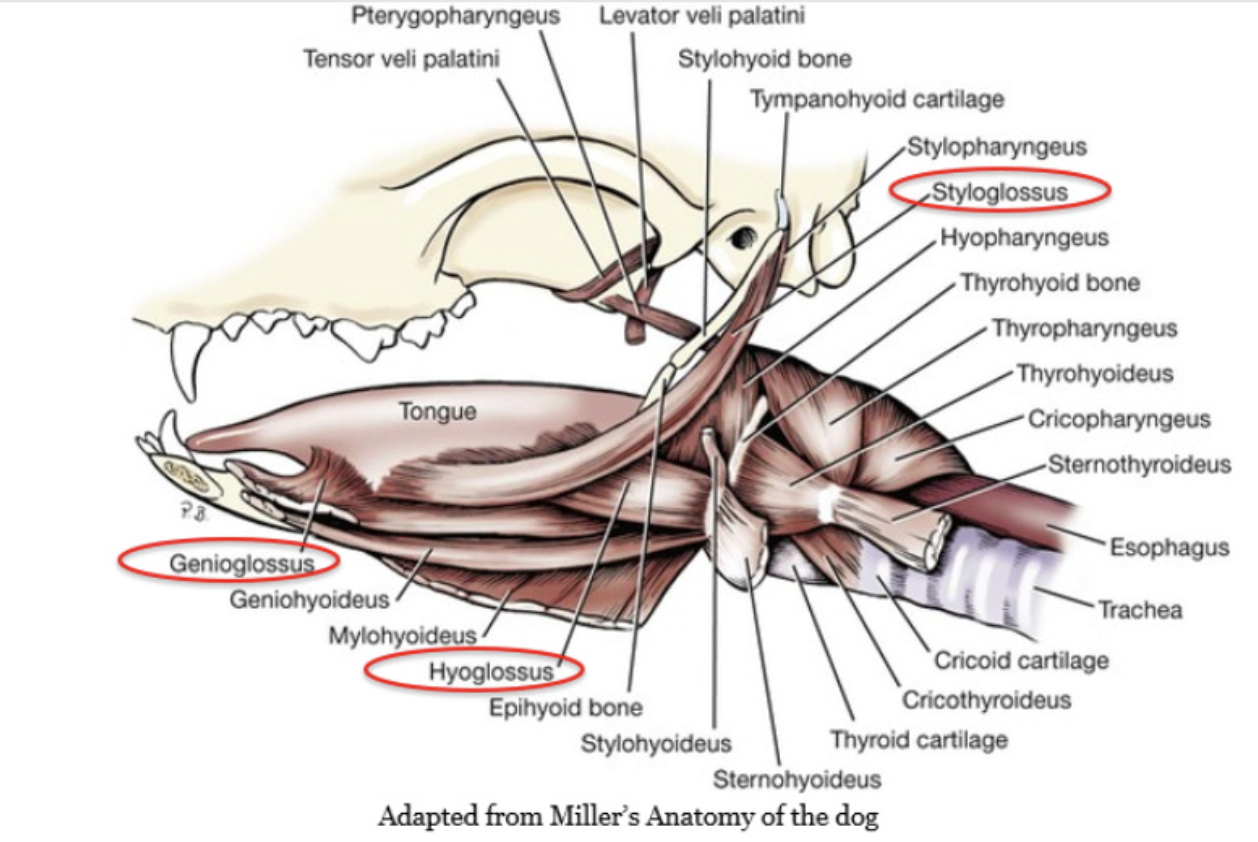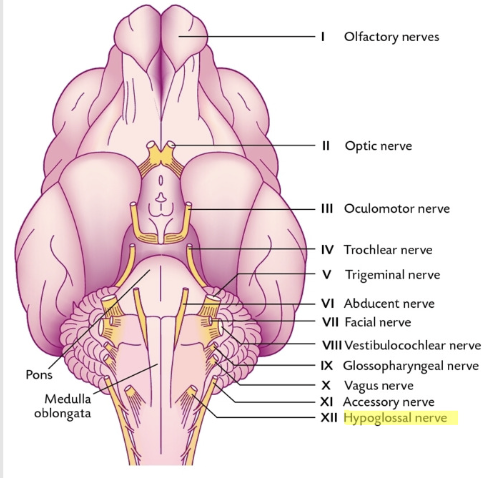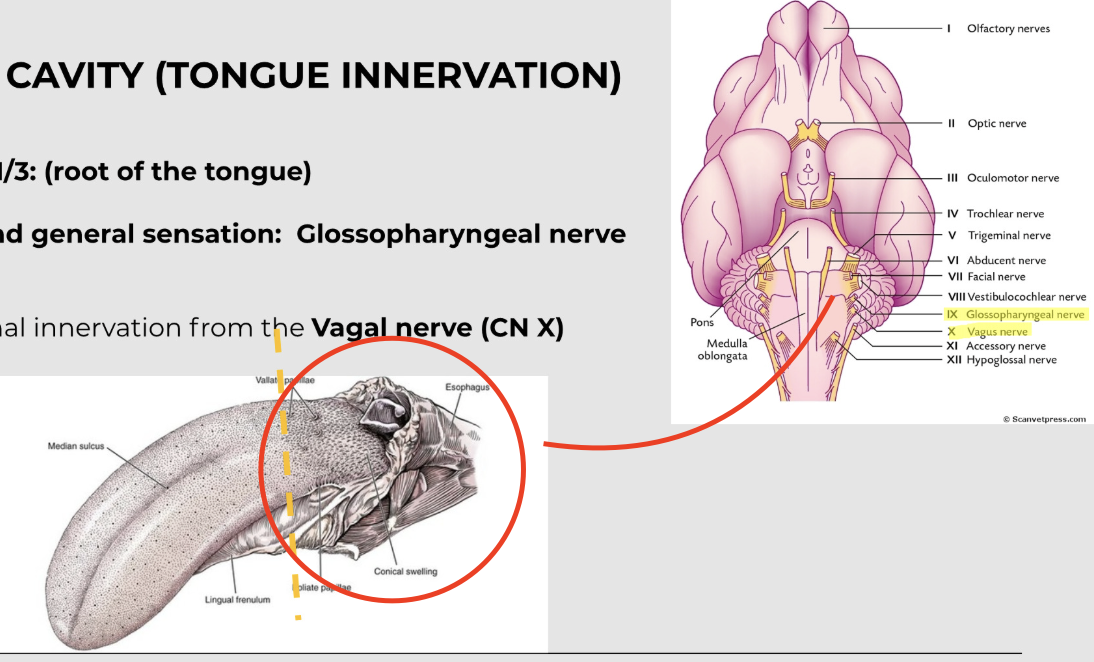The tongue
1/4
There's no tags or description
Looks like no tags are added yet.
Name | Mastery | Learn | Test | Matching | Spaced |
|---|
No study sessions yet.
5 Terms
what does the tongue consist of?
core muscle covered by stratified squamous epithelium - which is attached to the hyoid bone and mandible, hence mobile
it has 3 parts: apex, body and root
the surface has a large number of projections called papillae and taste buds
Lyssa is a structure in the central midline-core of skeletal muscle and adipose surrounded by dense connective tissue - what the pic shows - its basically this thick white line under the dog’s tongue in the middle

what muscles does the tongue have?
intrinsic - meaning the fibres go in different directions - which are longitudinal, transverse and vertical
which forms tongue proper (curl, groove, bend)
e.g. the tongue is principle organ of prehension cows (prehension = main tool cows use to grasp food and pull into mouth)
extrinsic - three pairs of muscles that have an osseous (bone- come from outside of the tongue and attach to the tongue) origin - which are stylo-glossus, hyo-glossus, genio-glossus
stylo-glossus = long thin muscle which retracts and elevates the tongue
hyo-glossus = wide and flat muscle - retracts and depresses the tongue
genio-glossus = fan shaped muscle caudal fibers protrude and rostral ones retract the apex

tell me about the tongue innervation
motor and sensory
innervated by cranial nerves that originate from the brain
motor - hypoglossal nerve (CN XII) supplies both the intrinsic and extrinsic muscles
damage would cause paralysis of the tongue

sensory nerves in the tongue that is taste and general sensation
found in caudal 1/3 is the root of the tongue - which connects to the glossopharyngeal nerve (CN IX) - which is known for taste and general sensation
you also get additional innervation from the vagal nerve (CN X)

which nerve is used for gustatory and sensation?
the lingual nerve
found rostral 2/3
the lingual nerve branch of the mandibular division of the trigeminal nerve (CN V)
for taste, it is the chorda tympani branch of the facial nerve (CN VII)